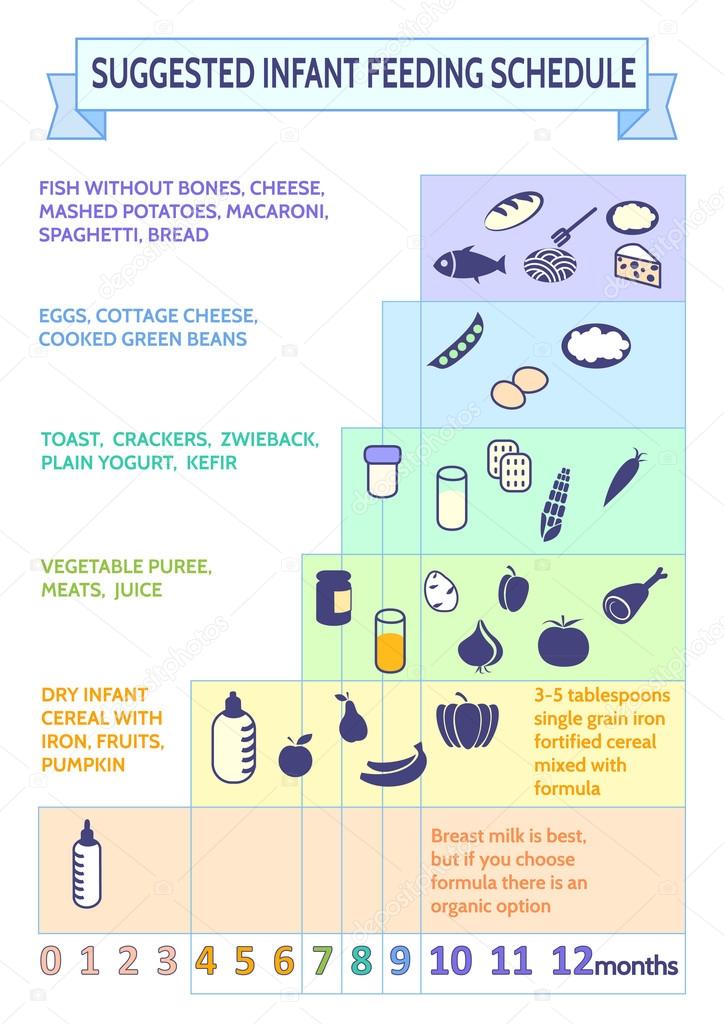Do male hummingbirds feed babies
| Female Hummingbirds are some of the most capable single moms in nature. Usually she will not accept the amorous attention of any male until she builds her nest by herself. The males role in the rearing of the young is limited to fertilization. After that occurs, she alone lays and incubates the eggs and cares for the fledglings. While we might be inclined to think poorly of the male for this seemingly neglectful behavior, think of the danger of having a blinking iridescent male leading the way to the vulnerable nest. Nature knows best. Before any male courts successfully, the female hummer gathers an enormous amount of stronger-than-steel-wire spider's silk. With the strong thread, she binds soft seed down, furry leaf hairs, fern fronds, fine fibrous roots, wool, feathers, and any similar material she finds to form the body and the soft lining of the nest. Spider's silk also fastens the nest to support the substrate. Hummer nests are remarkably similar in composition, but remarkably different in placement. Some saddle horizontal branches. Others are suspended from above. Some are partially suspended in the fork of a tree. Some hang precariously over streams. Others regurgitate a sticky glue to attach the nest to a nearly vertical cliff face. Some females are natural engineers and make use of small stones or mud clods on one side of the nest to counterbalance it. Others build up one side of the nest more than the other for the same counter weighted effect. The Andean Hillstar that nests in high cold Andes builds a thick and large nest for greater insulating value. Females are fierce defenders of their nests. They attack marauding hawks, man, snakes, or any animal that ventures too near. Males don't defend nests, but are equally adept when defending feeding and mating territories, which in a few cases they share with there mates. There are some rare reports of males incubating eggs and helping to feed the young. Ruby-throats and Rufous hummingbirds, the most northerly of nesting hummers whose cold climate offers the least resources, have been observed incubating eggs. There is a single report of an Anna's male feeding young. Incubation begins as soon as the eggs are laid. Once the eggs hatch, the almost impossibly small hummingbird babies emerge naked, totally helpless. They have a bump were the beak will be, and two rows of tiny down feathers down the middle of their back. Most skip an insulating downy stage of development. Nevertheless, they develop an early tolerance to temperature fluctuations. The female continues brooding the young until they are from 12 - 18 days old. In places like the high Andes, this can be as long as 38 days. Even once fledged, the young birds continue to develop their tail feathers and bills before they reach their mature length. Hummer babies are amazingly resilient. They not only survive extreme temperatures, but they also are able to make it through fall that would kill most nestlings. By the time they are 16 days old, they are well clad in feathers. Bright and alert, they peek out of the nest curiously and spend considerable time preening their new feathers. Every now and then, they rise up, hold on tightly to the nest and vigorously flap their wings to prepare them for flight. Unless frightened, hummers leave their nest with no urging from their mothers. Before they are three weeks old, most hummers take flight in the morning. Since the eggs are laid a couple of days apart, often one nestling leaves home a couple of days before its sibling. Most hummers fly gracefully from their very first attempt. As soon as they hatch, the babies that look like they are all head, are fed by mom. Despite the exemplary courage and perseverance of the female in raising her young, nesting success rates are relatively poor for hummers. Hummer nests are subject to many perils; loss of young or eggs to accidents, catastrophic weather, and predation. For example, 50% of the eggs of a White - eared hummer hatched, but only 16.7% of the eggs laid actually produced fledglings. Andean Hillstars, who nest so high as to avoid the attention of predators, produced 18 eggs in 19 nests, resulting in 16 fledglings. In a study of the Anna's hummers, who's nests are more susceptible to predators, 85 nests produced 68 eggs of which 42 hatched and only 23 survived to become fledglings. The more I learn about birds, and hummingbirds in particular, the more miraculous the variety and numbers of them seem. With so many dangers, and being such small creatures in such a large world, their numbers, variety, and success never cease to astonish me! |
Hummingbird Nesting -Buffalo Bill Center of the West
by Anne Hay
When I think of the birds in our Draper Museum Raptor Experience education program and the golden eagles in our Draper Natural History Museum’s Bighorn Basin Golden Eagle Ecology research project, I think of how difficult it is to be a raptor and how hard the parents work. All of the raptors that I am familiar with work together as a team to raise their young. Generally the mother does most of the incubating and taking care of the young chicks while the father hunts, bringing food to the female and the chicks. In some cases the male may spell the female for short periods so she can do a little hunting.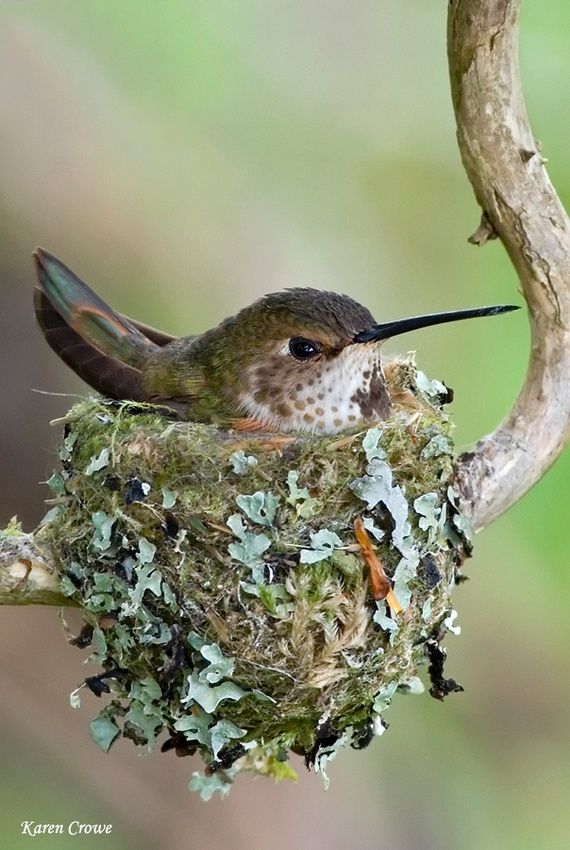 As the chicks become old enough to be left alone, both parents will hunt.
As the chicks become old enough to be left alone, both parents will hunt.
Some dads, however, just don’t make the cut. While spending two weeks in Lost Dutchman State Park in Arizona, I was quite surprised to find an Anna’s Hummingbird nest in a tree next to the parking area of our campsite.
Do you see the nest? It is on a cut off, dead branch.After watching the nest for a couple of days, I realized I had not seen any males around. Was she raising these chicks on her own? Well, yes, it turns out that some males just aren’t very helpful. Depending on the source you read, 81 – 90% of bird species form a parental pair for at least one breeding season and many for life. The Anna’s Hummingbird is not one of these. Instead it falls to the female to do the work of building the nest, incubating the eggs, raising the young, and continuing to feed them for up to a week after fledging.
The male’s job is to impress the female, so that she will mate with him.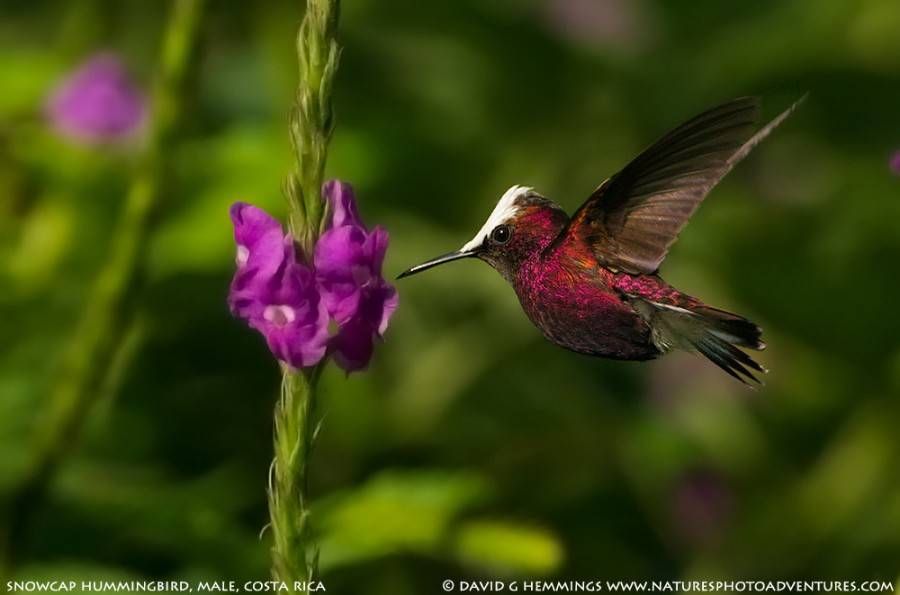 The male performs courtship dives, climbing up to 130 feet into the air and then swooping to the ground with a burst of noise that is produced through their tail feathers. The female sits nearby and watches the display. If he is to her liking, she leads him toward her nest site, where she perches and watches as he performs another display where he flies back and forth about a foot above the female, often singing to her. The mating only takes a few seconds, then they go their separate ways. A polygamous bird, a pair bond is not developed, and both probably mate with a number of other birds.
The male performs courtship dives, climbing up to 130 feet into the air and then swooping to the ground with a burst of noise that is produced through their tail feathers. The female sits nearby and watches the display. If he is to her liking, she leads him toward her nest site, where she perches and watches as he performs another display where he flies back and forth about a foot above the female, often singing to her. The mating only takes a few seconds, then they go their separate ways. A polygamous bird, a pair bond is not developed, and both probably mate with a number of other birds.
The female now shoulders all the work. She builds her nest of plant material and small feathers, often binding it all together with spider web. They may also decorate the outside to help camouflaged the nest. “Our” nest was decorated with chips of tree bark.
Anna’s Hummingbird Nest in Our CampgroundI wondered what she was feeding them. I never saw her fly from our sugar water feeder directly to the nest. With a little research, I discovered that the female feeds her young chicks tiny insects, sometimes mixed with nectar. She does this by sticking her bill deep into the chick’s mouth, and regurgitating what she has gathered.
With a little research, I discovered that the female feeds her young chicks tiny insects, sometimes mixed with nectar. She does this by sticking her bill deep into the chick’s mouth, and regurgitating what she has gathered.
When our 2-weeks in Lost Dutchman were over, the chicks had not yet fledged. This is the last family photo I took.
Two Chicks and Mom Made Up This Family UnitContrast the hummingbird family photo with my golden eagle family photo.
Golden Eagle Chick (left), Mom, and Dad. No Deadbeat Dad Here.This got me to wondering if this behavior was true of all humming birds. Well it turns out it is! Just as I was beginning to feel sorry for the poor female hummingbird, I read an interesting fact. Female hummingbirds do not let the males near a nest. The theory is that the male hummingbird’s bright colors might alert a predator to the location of the nest. So I guess, if you’re not wanted, there is no point in hanging around.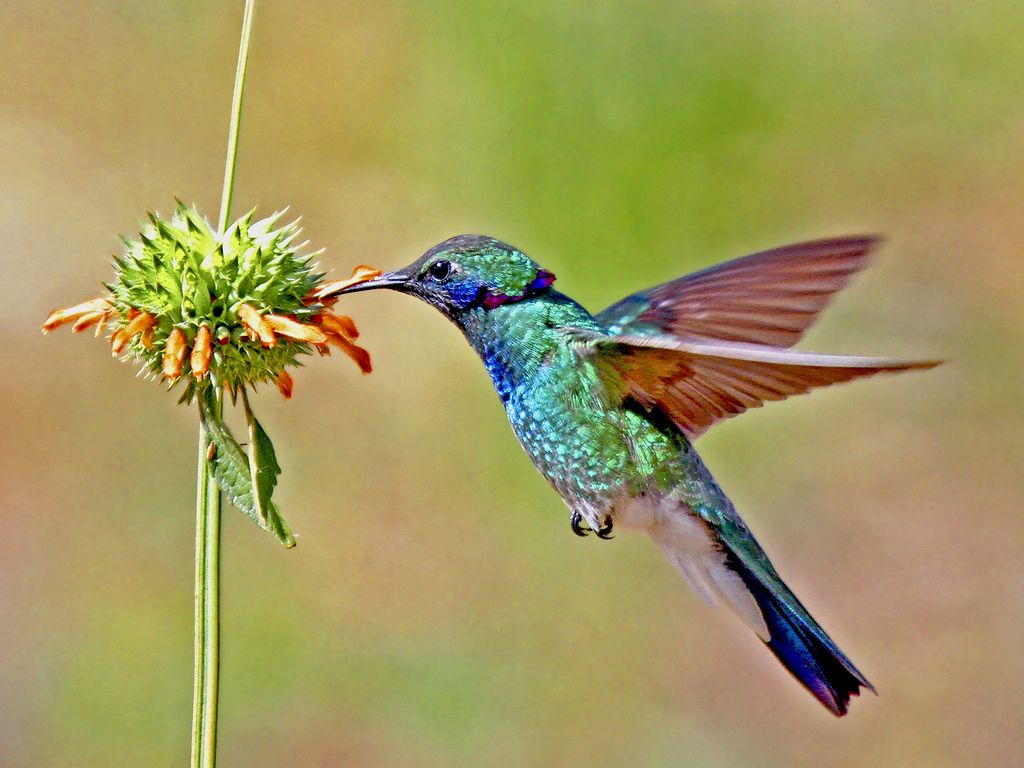
Filed Under: The Draper Museum Raptor Experience Tagged With: Anna's Hummingbird, Anna's Hummingbirds, Draper Museum Raptor Experience, Golden eagle, Hummingbird Nesting, Hummingbirds, Lost Dutchman State Park
About Anne Hay
Anne Hay has a Bachelor's degree in Elementary Education and a Master's in Computers in Education. She spent most of her working years teaching third grade at Livingston School in Cody, Wyoming. After retiring she began doing a variety of volunteer work for the Buffalo Bill Center of the West’s Draper Natural History Museum.
Anne loves nature and has a concern for the environment. She believes that educating the public, so that they will have a better understanding and appreciation for the natural world, is very important. Because of this belief, volunteering at the Center is a perfect fit. She spends time in the Draper Lab, observing eagle nests for Dr. Charles Preston’s long-term research project on nesting golden eagles, writing observation reports of raptor sightings in the Bighorn Basin, and working with the Draper Museum Raptor Experience.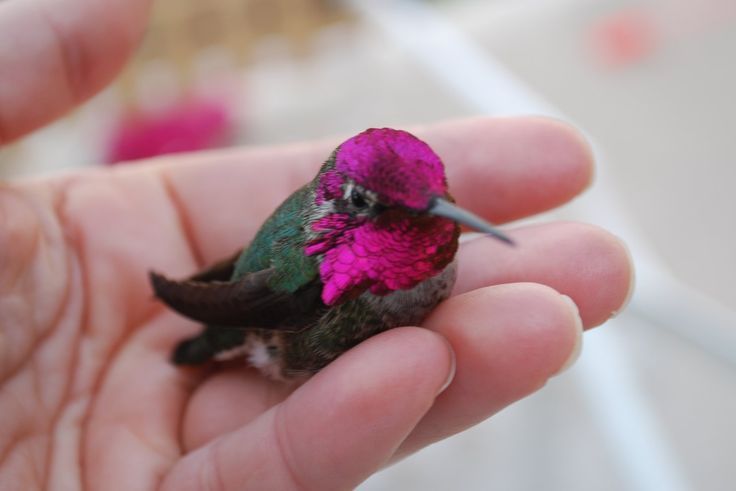
Anne states that, “Having a bird on my glove, is one of my all time favorite things in life.”
Very small creatures - Nauka TV channel
Svetlana Chanilova
Despite the size, nature endowed each animal with some amazing feature
Despite the size, nature endowed each of these animals with some amazing feature. In our material, babies are champions from the group of chordates: mammals, birds, fish and amphibians.
The smallest bird
The smallest bird on Earth, the bee hummingbird, lives on the island of Cuba. The male, whose length is not more than 5 cm, including the beak and tail, weighs less than 2 g (like 2 kopecks of the Soviet sample), and the female is slightly larger. As sometimes happens in nature, she is traditionally painted in faded colors and desperately hardworking, and he is defiantly bright, narcissistic and selfish. Males do not build nests, do not incubate chicks, moreover, they do not feed and do not help in this extremely complex process. Due to their high metabolism, hummingbirds are forced to feed most of the day - they need to visit up to 1500 flowers, collecting nectar from them. With such a metabolism, a person weighing 50 kg would have to drink about 400 liters of sweet water per day.
Males do not build nests, do not incubate chicks, moreover, they do not feed and do not help in this extremely complex process. Due to their high metabolism, hummingbirds are forced to feed most of the day - they need to visit up to 1500 flowers, collecting nectar from them. With such a metabolism, a person weighing 50 kg would have to drink about 400 liters of sweet water per day.
The female needs to eat herself and feed the chicks. She pushes food with the help of a long beak directly into the stomach of a newborn. It is believed that the interval between feeding chicks cannot exceed 8 minutes. Otherwise, they weaken or do not survive at all. Surprisingly, hummingbirds nurse almost all cubs.
The heart of these gentle creatures in a calm state beats 300 beats per minute, and in flight - up to 500. To maintain such an active lifestyle, they fall into a stupor at night. Body temperature drops from 43 to 14–20 °C. And with the sunrise, hummingbirds “come to life”. These birds are listed in the Red Book as a species close to extinction.
These birds are listed in the Red Book as a species close to extinction.
Classification: scientific name - Mellisuga helenae, class - birds, order - hummingbirds, family - hummingbirds, genus - bee hummingbird, species - bee hummingbird.
The smallest mammal
The pygmy millitooth is one of the smallest mammals (its rival is the pig-nosed bat). It has a size of 5-7 cm, including the tail, which can reach half the total body length. It weighs (at a stretch), if we follow the analogy with Soviet coins, like the same 2 kopecks. (2 g).
This baby is a carnivore and “suffers” with a brutal appetite: it usually eats food twice its own body weight. Insects, larvae, wood lice, earthworms predominate in her diet.
When moving, her heart just jumps out of her chest: the heart rate reaches 1500 beats per minute.
Polytooth prefers to live in grassy fields, provided it is humid. Its habitat is the south of Europe, the coastal regions of Arabia and North Africa, Central Asia, India, the Philippines, and Japan. Reproduction has not been studied.
Reproduction has not been studied.
Classification: scientific name - Suncus etruscus (has several more names: Etruscan shrew, pygmy shrew, baby shrew), class - mammals, order - shrews, family - shrews, genus - manytooths, species - pygmy manytooth.
Almost the smallest mammal
The pig-nosed bat is how the Thai biologist Kitty Thonglongya christened this small animal, which he discovered 40 years ago. The scientist thought that the little pink proboscis of the mouse looked like a pig's snout.
Its weight does not exceed 2 g, its length is from 2.5 to 3.5 cm, its wingspan is from 13 to 15 cm. but the weight is the same. The mouse is eared and large-headed: the size of the skull is 1/3 of the body length. Feeds mainly on dipterous insects, sometimes hymenoptera and spiders. This little inch appetizingly “removes” food directly from the leaf, since the structure of its wings allows it to hang in one place for a long time.
Mice live in Thailand, in the depths of small caves located in limestone hills. At dusk, they fly out to hunt in a nimble company of four or five crumbs. They are listed in the Red Book as an endangered species: their number is estimated at about 500 individuals.
Classification: scientific name - Craseonycteris thonglongyai, class - mammals, order - bats, family - pig-nosed, genus - Craseonycteris, species - pig-nosed bat.
The smallest reptile
If one of the largest Galapagos tortoises weighs about 200 kg, then the weight of the smallest, Namaqualand or Cape speckled tortoise, ranges from 95 to 165 g with a body length of 6–10 cm. Females are usually larger than males . During the mating season, males behave aggressively not only towards rivals, but also towards the chosen “lady”. During combat, they try to turn each other over by biting and striking with the leading edge of their carapace.
The female, at the mercy of the winner, after a while lays one tiny egg in the hole. After four or five months, a newborn is born. It weighs 5–8 g (for comparison: a quail egg weighs 10–12 g).
After four or five months, a newborn is born. It weighs 5–8 g (for comparison: a quail egg weighs 10–12 g).
Turtles live in South African regions, mainly in dry forests and scrub savannahs. They are listed in the Red Book as a species close to extinction (the tribes of South Africa used them for medicinal purposes).
Classification: scientific name - Homopus signatus, class - reptiles, order - turtles, family - land turtles, genus - flat-bodied turtles, species - Homopus signatus.
The smallest lizard
Of all the lizards, perhaps the most popular are geckos. Among them there are no aggressive and predatory reptiles, but pretty faces with an unusual appearance prevail. According to American herpetologist Clifford Pope, they are so attractive that they can compete with turtles as exotic pets. In addition, geckos are most often small in size. And at 1964 in the British Virgin Islands (an archipelago in the Caribbean) there were 15 cute midgets.
The Virginian round-toed gecko has a body length of 36 mm, of which half is in the tail. Its weight is 0.15 g, which is commensurate with one pumpkin seed. Due to their small size, geckos lose moisture twice as fast as their larger relatives. Therefore, they prefer to live in humid places, most often in crevices between stones, on which you can crawl out during the day to bask in the sun.
Classification: scientific name - Sphaerodactylus parthenopion, class - reptiles, order - scaly, family - geckos, genus - round-toed geckos, species - Virginian round-toed gecko.
The smallest amphibian
The smallest vertebrate known from the class of amphibians is the frog Paedophryne amauensis. In 2009, it was discovered by American scientists among fallen leaves in a tropical forest in Papua New Guinea. The length of a miniature frog does not exceed 8 mm.
According to scientists, the frog has yet to be thoroughly investigated.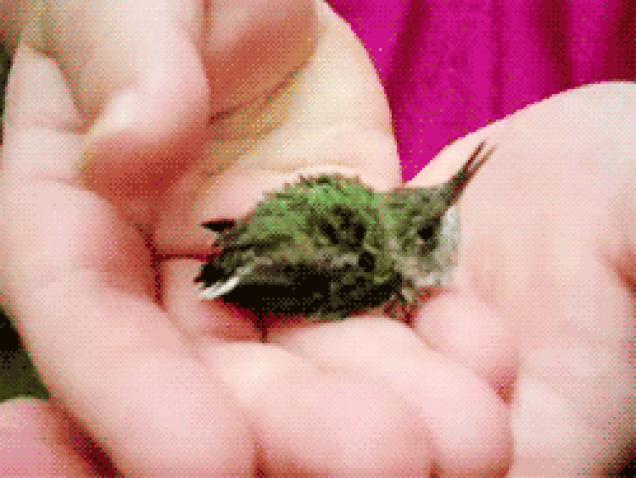 But researchers have already come to an interesting conclusion. Studying the genetic data of miniature frogs of different species, they concluded that during evolution, animals have decreased in size by 11 times.
But researchers have already come to an interesting conclusion. Studying the genetic data of miniature frogs of different species, they concluded that during evolution, animals have decreased in size by 11 times.
The peculiarity of this crumb is that the sounds it makes are similar not to croaking, but to the chirping of insects.
Classification: scientific name - Paedophryne amauensis, class - amphibians, order - anurans, family - narrowmouths, genus - Paedophryne, species - Paedophryne amauensis.
The smallest fish
The Guinness Book of Records named two of the smallest fish at once: one from the cyprinid family, Paedocypris progenetica, lives in the peat bogs of Indonesia, and the other, the Panamanian Photocorynus spiniceps, lives at a depth of less than 1000 m in tropical and subtropical waters of the Atlantic and Pacific. Both species are found in places where sunlight does not penetrate.
The length of an adult from Indonesia is 7.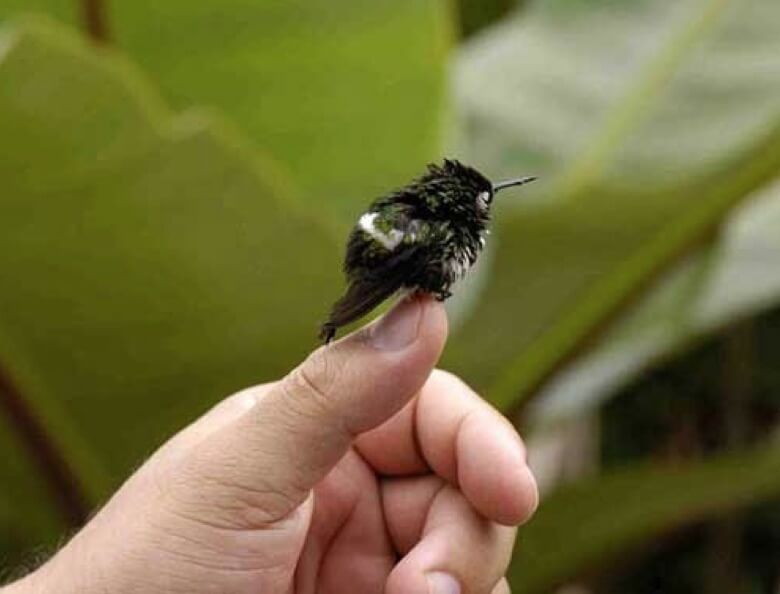 9 to 10.3 mm. Nature endowed males with enticing spots between the eyes and on the crown. Until the beginning of the 21st century, scientists did not explore peat bogs, believing that where there is very acidic water, life simply cannot exist. Nature has presented another surprise - and there is life there. In 2006, the fish was described and entered into the scientific register. An unusual fact is that it belongs to the carp family.
9 to 10.3 mm. Nature endowed males with enticing spots between the eyes and on the crown. Until the beginning of the 21st century, scientists did not explore peat bogs, believing that where there is very acidic water, life simply cannot exist. Nature has presented another surprise - and there is life there. In 2006, the fish was described and entered into the scientific register. An unusual fact is that it belongs to the carp family.
Classification: scientific name - Paedocypris progenetica, class - ray-finned fish, order - cyprinids, family - cyprinids, genus - Paedocypris, species - Paedocypris progenetica.
Colleagues in miniature - Panamanian photocorines - are known for unprecedented gender discrimination. Females reach a length of 5–7 cm, and males are dwarfs, only 6–9 mm.
As soon as males mature, they actively rush to search for a female and, having found a prey, bite into her with sharp teeth. Their skin and blood vessels grow together, and the male begins to feed through the blood of his partner. From that moment on, the male parasitizes the female (a phenomenon called "sexual parasitism"): he is satiated in the most impudent way, noticeably grows up and becomes much fatter than his free-swimming counterparts. The male lives and produces offspring as long as his partner is alive.
From that moment on, the male parasitizes the female (a phenomenon called "sexual parasitism"): he is satiated in the most impudent way, noticeably grows up and becomes much fatter than his free-swimming counterparts. The male lives and produces offspring as long as his partner is alive.
Classification: scientific name - Photocorynus spiniceps, class - ray-finned fish, order - anglerfish, family - linophrinidae, genus - photocoryne, species - Panamanian photocoryne.
Source: "My Planet".
The site may use materials from Facebook and Instagram Internet resources, owned by Meta Platforms Inc., prohibited in the Russian Federation
Tell a friend
-
Nauka TV channel became a laureate of the Big Digit award
-
- living
- Evolution today
Evolutionists figured out how the bright colors that warn of poisonousness appeared
-
- Human device
- social animal
Neuroscientists: the brain of people who speak different languages really works differently
-
- What was before
- living
Over 50,000 year old giant eagle fossils discovered in Australia
-
- Human device
New genes linked to schizophrenia and autism identified
-
Midjourney
After implantation of deer cells, mini-antlers grew on the heads of mice
-
Shutterstock
Historian: Leonardo da Vinci's mother is a slave taken from the territory of modern Russia
-
Midjourney
Unbalance, selfishness and just a lie? Why You Shouldn't Trust Chatbots
-
Ediacaran example
Shutterstock
There were not five ancient extinctions.
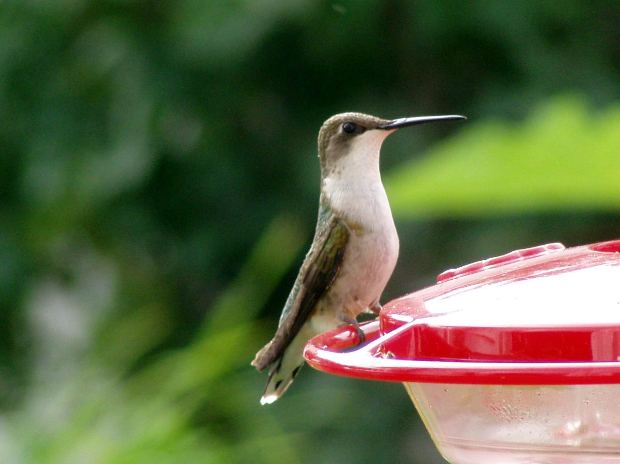 Paleontologists have discovered traces of a hidden sixth
Paleontologists have discovered traces of a hidden sixth -
Midjourney
How to use the energy of the Sun for human needs: a possible future
Do you want to be aware of the latest developments in science?
Leave your email and subscribe to our newsletter
Your e-mail
By clicking on the "Subscribe" button, you agree to the processing of personal data
Creating a family in the animal world
Love ... How much romance, poetry, feelings and other exciting moments are in this word! Screaming cats in the yards and sighing couples at the entrances, licking cheetahs, love games of lions, elephants and giraffes ... But this is only the outer part of the biological iceberg called "reproduction".
Science and life // Illustrations
The sea horse bore its offspring.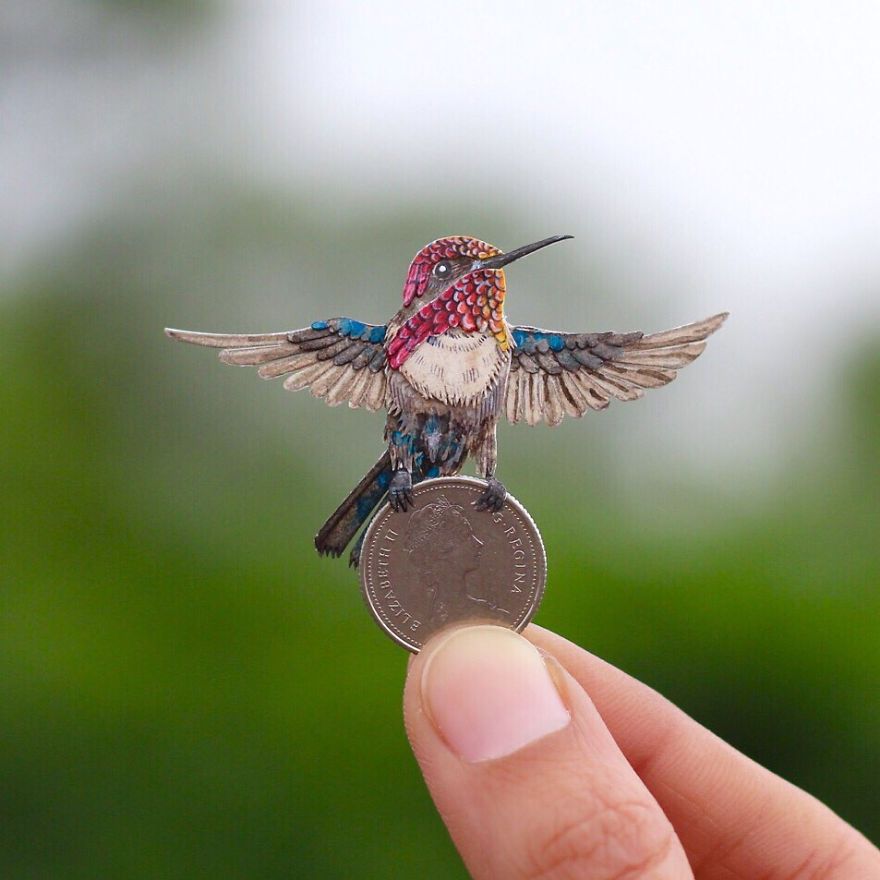
Male crowned cranes enchant females with crowns. When courting, it is unfolded in all its glory.
"Knight's Tournament" takes place among the deer.
Hippos live quietly until the time comes to choose a bride. Then the angry males attack each other, inflicting deep wounds.
Love dances of cranes last for days.
‹
›
View full size
Love and reproduction are not at all one and the same. The first concept is responsible for the meeting of two living organisms of the same species at a specific point in time and space, and the second - for the mechanism of reproduction itself - the process of continuing the existence of the gene pool in generations. Yes, yes, you and I, friends, and billions of other living beings on the planet are only a temporary shelter for the gene pool. For our life is short, and only the gene pool can exist almost indefinitely - as long as there is planet Earth...
The first living organisms - bacteria that appeared on Earth 3. 5 billion years ago, multiplied by division and did not think about anything like that. This idyll partially ended 2.5 billion years ago, when a revolution took place on the planet - the living world was divided into male and female halves.
5 billion years ago, multiplied by division and did not think about anything like that. This idyll partially ended 2.5 billion years ago, when a revolution took place on the planet - the living world was divided into male and female halves.
In order for the sperm and egg, as carriers of two genomes, to meet and form something new, individuals of various species embark on the most fantastic, incomprehensible adventures and tricks.
Marriage systems are very different in different kinds of creatures. Geese, swans, some primates are monogamous and choose a partner for life. Many migratory birds form pairs for one season. In antelopes, horses, zebras, bulls, rams, anubis baboons, we often observe polygamy - the male creates a harem around him. The elephant accompanies a group of females, behaving quite independently, but in one way or another submitting to him. But female tinamou birds, jacanas, South American ostrich nandu follow the polyandry model. They have a connection with several males during the season.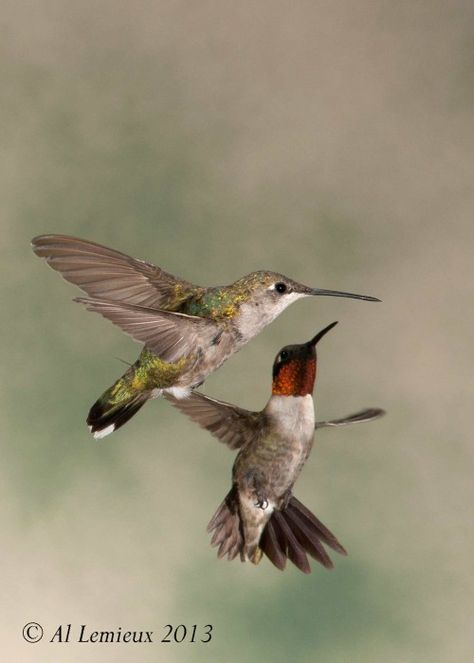 There is also promiscuity - a system of free interbreeding in a population. Bustards, waders, hummingbirds, ducks, alpacas, gray rats, voles, primates, etc. "profess" it.
There is also promiscuity - a system of free interbreeding in a population. Bustards, waders, hummingbirds, ducks, alpacas, gray rats, voles, primates, etc. "profess" it.
Creating a family is a difficult period in the life of any living being.
Masculine
How many males in the world, so many different "love stories" and strategies for approaching the object of passion. Often, animals find themselves in a situation where the mating season is on the nose, but there is no choice. There are so few blue whales left today that it is not at all easy for a sea giant to find a bride in the expanses of the Pacific Ocean.
There are still creatures who do not have much choice of a couple due to living conditions. These include some fish, such as deep-sea anglerfish. These are extremely amazing creatures. Their males and females are so different from each other that for a long time they were considered different types of fish. Males are small in “growth”, only 14–20 mm, compared to them, females look like giantesses, reaching 30–40 cm. Males do not have such an outgrowth. All of them, living in the vast depths of the ocean, are creatures with the manners of hermits, living in a world of eternal darkness and cold. It is not known how much time - a year or a year and a half - the male spends looking for a partner, wandering along the desert bottom in darkness full of dangers. But having found it, he, without delay, clings to it like a tick, so as not to accidentally lose the acquired treasure. Now he will not part with her until his death, for he "knows" that he will not have another happy chance. The partner, however, does not mind such an obsessive union. She also has no choice - she doesn’t know how to look for a couple, and who wants to while away a century in the cold depths alone? They say that real marriages are made in heaven, but for deep-sea anglers, they happen deep, literally in the underworld. Now they are connected for life. The lips and tongue of the male very soon grow to the body of the newly found partner, and his lower jaw, olfactory organs, eyes and intestines atrophy.
Males do not have such an outgrowth. All of them, living in the vast depths of the ocean, are creatures with the manners of hermits, living in a world of eternal darkness and cold. It is not known how much time - a year or a year and a half - the male spends looking for a partner, wandering along the desert bottom in darkness full of dangers. But having found it, he, without delay, clings to it like a tick, so as not to accidentally lose the acquired treasure. Now he will not part with her until his death, for he "knows" that he will not have another happy chance. The partner, however, does not mind such an obsessive union. She also has no choice - she doesn’t know how to look for a couple, and who wants to while away a century in the cold depths alone? They say that real marriages are made in heaven, but for deep-sea anglers, they happen deep, literally in the underworld. Now they are connected for life. The lips and tongue of the male very soon grow to the body of the newly found partner, and his lower jaw, olfactory organs, eyes and intestines atrophy. They are now of no use to him, since he will regularly receive all the necessary nutrients with the blood of the female, through the blood vessels that have grown into his body. The male waters each egg with milk. This is real love - in eternal darkness and eternal unity!
They are now of no use to him, since he will regularly receive all the necessary nutrients with the blood of the female, through the blood vessels that have grown into his body. The male waters each egg with milk. This is real love - in eternal darkness and eternal unity!
Another creature - a seahorse living in tropical and southern seas - is very romantic. The male has a kind of bag on his tummy, where the female, after a touching ritual of acquaintance and courtship, lays her eggs. Having fertilized them inside itself, the horse becomes pregnant and in due time gives birth to several hundred microscopic babies in the water. Someone who, and he is definitely sure of his paternity.
A small bird lives in Australia - a bowerbird, which, in order to win the heart of its chosen one, builds a huge structure from leaves and branches. Handsome people and dandies build simpler huts, relying on personal charm, and those who are more modest build entire mansions, decorated with multi-colored pebbles, glass fragments, feathers, flowers, etc. The female gives her heart not to the owner of the largest territory, building, etc., but to the one who charmed her with the beauty and brightness of the decoration of his building. After the show, the happy couple, without regret, abandons the hut-palace and builds an ordinary nest.
The female gives her heart not to the owner of the largest territory, building, etc., but to the one who charmed her with the beauty and brightness of the decoration of his building. After the show, the happy couple, without regret, abandons the hut-palace and builds an ordinary nest.
The heads of many males of different species are decorated with amazing formations. These are various combs, fans, crowns, hoods and horns, which appeared not at all in order to fend off predators, but precisely in order to conquer future partners and frighten sexual rivals. Insects (beetles), reptiles (remember dinosaurs, Jackson's, Parson's chameleons), birds (peacocks, birds of paradise, fan-bearing doves) and mammals (deer, antelopes, bulls, goats and rams) especially distinguished themselves here.
All deer, bulls, rams and antelopes grow their own extraordinary crowns throughout their lives. Moreover, if in bovids - bulls, antelopes, goats, rams - they grow incessantly, reaching record sizes by the end of their lives, then in deer, the antlers fall every season in the spring, so that by the beginning of the mating season (by autumn) grow in all its splendor. At the same time, in subsequent years, the horns grow more powerful and branched. If the yearling of a red deer has “shpichaks” sticking out - small finger-shaped horns, then in adults they turn into a real “tree” with many processes. The most powerful wears the most majestic crown.
At the same time, in subsequent years, the horns grow more powerful and branched. If the yearling of a red deer has “shpichaks” sticking out - small finger-shaped horns, then in adults they turn into a real “tree” with many processes. The most powerful wears the most majestic crown.
Very similar, everything happens in ordinary and argus peacocks. Only instead of horns, males grow crowns on their heads, and the upper tails turn into a frozen waterfall of multi-colored “eyes”, which folds when walking, and unfolds when courting, charming females with a multitude of bright spots. The larger, richer and more coloristically saturated such a tail, the higher the physiological status of its owner. The better his physical condition, the better his sexual products and his children will be. And females are well aware of this.
Spotted hyenas are very unusual. Females have established a matriarchy(!), which happens infrequently in the world of living beings. They "rule the show" in everything and "oppress" the males, so the proverb "Look for a woman in every evil!" in hyenas it takes on a true meaning. Initially being a subordinate, the male “makes a career” in the pack for years, reaching a higher rank in order to be able to give offspring. Since only one female, the leader, breeds in a pack of hyenas, the male must twist hard to persuade the matron to cohabitation.
From the age of 12, white rhinos begin to fight for the attention of females. Males and females protect their own vast territories of the savannah from fellow tribesmen. Individuals of the masculine gender - the owners of the territories, are quite tolerant of other males - uninvited guests, if the latter show submission and do not make threatening movements. This patience decreases when a female is nearby. The size of the plots of male individuals is small - on average 3 km 2 , which is due to the quality and sufficient amount of food. Rhinos, in turn, are also “not born with a bast” and occupy their territory - from 6 to 20 km 2 , which may overlap with some males. At times, violent conflicts occur between males, especially when there is a rhinoceros who is in heat nearby. Males mark their territory with large piles of droppings along the perimeter and inside it. In the eyes of females, only pretenders who own their own patches of savannah are real. Just a rhinoceros is not interesting.
Males mark their territory with large piles of droppings along the perimeter and inside it. In the eyes of females, only pretenders who own their own patches of savannah are real. Just a rhinoceros is not interesting.
Matchmaking
Despite the fact that the initiative during the mating season most often belongs to males, the final choice is made by ... females. Yes Yes. In the world of animals (and people), they are more responsible in choosing a partner. Females should assess whether the applicant is of the same species (subspecies) as they are, is it strong enough, healthy and adequate? All these preludes of love, consisting of complex demonstrations, dances, songs, struggles and fights for territories, are in fact a system of tests. Females are called upon to test the chosen one in all respects in order to make sure of his true qualities. It must be real, withstanding any competition in any adverse environmental conditions.
Let's start with the cats, all those cheetahs and leopards.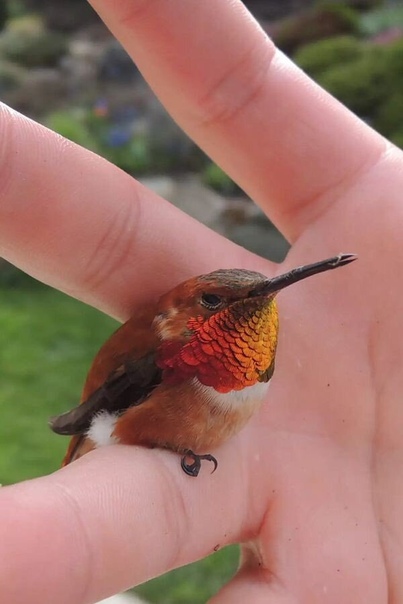 They have a cat that came to the "hunt", sometimes she herself is looking for a male, since the time when she can become pregnant is very short, and the cat must regularly (and without interruption) give birth to children. But at the same time she chooses the best! Love in large cats is a delicate matter and does not at all correspond to the epic and the popular opinion that, they say, they breed “like cats”, “everything is simple with cats”, etc. A leopard, for example, for a whole week, and sometimes more than one, follows the female, trying to achieve her location, attention, tame her, and then subdue her. Animals converge very slowly, because they are individuals, with their own rich experience and inner world, and even so solidly armed. They need time to get used to each other and even more so to approach the love ending.
They have a cat that came to the "hunt", sometimes she herself is looking for a male, since the time when she can become pregnant is very short, and the cat must regularly (and without interruption) give birth to children. But at the same time she chooses the best! Love in large cats is a delicate matter and does not at all correspond to the epic and the popular opinion that, they say, they breed “like cats”, “everything is simple with cats”, etc. A leopard, for example, for a whole week, and sometimes more than one, follows the female, trying to achieve her location, attention, tame her, and then subdue her. Animals converge very slowly, because they are individuals, with their own rich experience and inner world, and even so solidly armed. They need time to get used to each other and even more so to approach the love ending.
Cheetahs are a little different. It takes them one or two days a year to breed, when males and females look for each other. Their sexual instinct is so strong that the animals quickly find a common language and the female accepts the courtship of the male. Although their love couples are selected on the basis of a common mutual sympathy. It happens that even a prominent handsome male may not like a particular female and she violently rejects him, hissing and threatening to scratch his “face”.
Although their love couples are selected on the basis of a common mutual sympathy. It happens that even a prominent handsome male may not like a particular female and she violently rejects him, hissing and threatening to scratch his “face”.
Gifts
There may be many or few future partners. For those who have no end of suitors, it is better to come with a gift, everyone knows this. Even tiny insects do this - spiders and flies. Pushers are small flies that look very similar to mosquitoes. During the mating season, they gather in large companies in forest clearings and swarm, hovering in the air and “jogging” in one place (hence the name). Walking in the summer in cloudy weather in damp places, you often stumble upon clusters of pushers and try to slip through them faster, mistaking them for mosquitoes. And in the neighborhood with pushers, small mosquitoes usually swarm. If you stand longer, you can see how from time to time one or the other pusher leaves its swarm, bursts into the thickness of mosquitoes, grabs the first comer and returns to its place. Now he is ready to woo, having previously handed his gift to the chosen one.
Now he is ready to woo, having previously handed his gift to the chosen one.
It is still customary for some pushers to “pack” a gift in a silky “package” from their own thread. As you can see, nothing beautiful is alien to them. Although here, too, is a "double-edged sword." Some smart guys give their gullible chosen ones an empty "package", without a gift. And she finds out that there is nothing there after the “wedding”, when the deed is done and the gentleman has already caught a trace ...
The same edible gifts are presented to their loved ones by some types of spiders and birds.
Dances, songs and tournaments
The rapprochement of two "loving hearts" is not an easy process at all. It is accompanied by an exchange of mutual signals - pacifying demonstrations designed to relieve mutual stress when two individuals dangerous to each other meet and "lull" the partner's aggressive instincts. Often they are similar to the rituals of domination - submission, when the vassal, wanting to appease the master, is substituted for him (baboons), and even with the relationship between mother and cub (gulls, sparrows), when the baby begs her for food.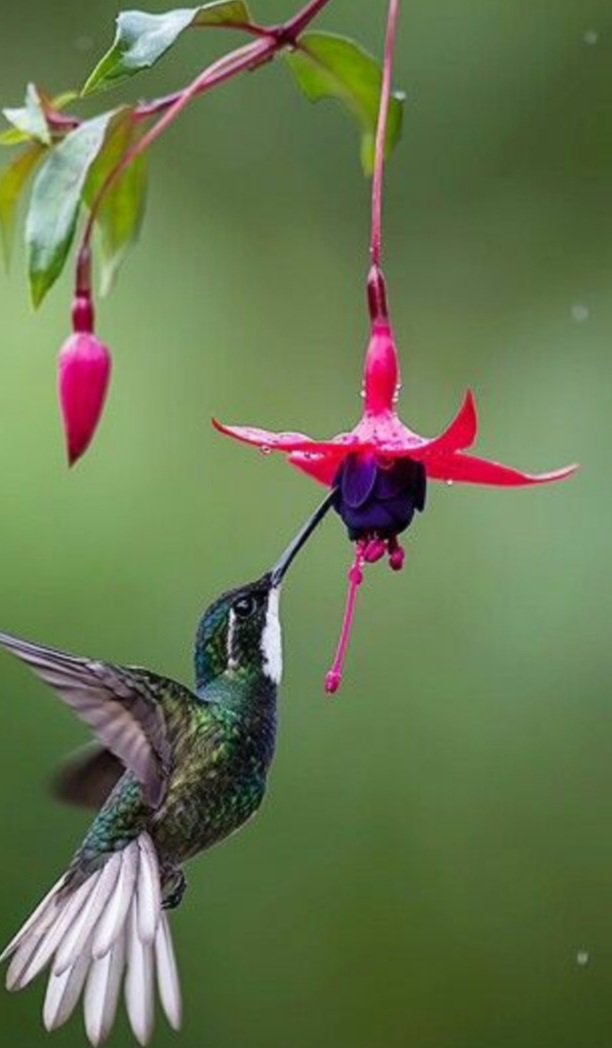 In the process of evolution, within each species, their own systems of love preludes were formed. It can be dances, like cranes, when the birds dance their knees for hours, demonstrating their excellent physical shape. Or songs, like nightingales and other songbirds. Given that the male begins to sing only after capturing his own feeding area and having a nest (or a place for it), the female is able to appreciate his talents, which reveal the excellent state of the body and the ability to withstand competition with other applicants.
In the process of evolution, within each species, their own systems of love preludes were formed. It can be dances, like cranes, when the birds dance their knees for hours, demonstrating their excellent physical shape. Or songs, like nightingales and other songbirds. Given that the male begins to sing only after capturing his own feeding area and having a nest (or a place for it), the female is able to appreciate his talents, which reveal the excellent state of the body and the ability to withstand competition with other applicants.
The most interesting creatures live in the mangroves and on the muddy beaches - beckoning crabs, which generally do without a gift. Their size is 1-4 cm, and they got their fame because in males one claw is simply gigantic and many times larger than the other. In addition, it is bright and contrastingly colored. With a small claw, the crab collects food particles and transfers them to the mouth, and the appointment of a large claw is more romantic. Walking through the liquid mud of mangroves, the crab constantly waves it, as if calling brides from all over the beach. Elegant gentlemen especially rage if they see a modestly dressed female. They gesticulate so cordially that the call is understandable even to us humans. The crab seems to want to say: “Come here! Come here quickly, come!" Trying to attract the attention of the bride and win her heart, beckoning crabs are not limited to swinging a large claw. Each species has its own manner of courtship. And suitors of each species wave in their own way. Such a variety of tricks is necessary so that the bride can figure out who is who, and would not be tempted by chance to the calls of a stranger.
Walking through the liquid mud of mangroves, the crab constantly waves it, as if calling brides from all over the beach. Elegant gentlemen especially rage if they see a modestly dressed female. They gesticulate so cordially that the call is understandable even to us humans. The crab seems to want to say: “Come here! Come here quickly, come!" Trying to attract the attention of the bride and win her heart, beckoning crabs are not limited to swinging a large claw. Each species has its own manner of courtship. And suitors of each species wave in their own way. Such a variety of tricks is necessary so that the bride can figure out who is who, and would not be tempted by chance to the calls of a stranger.
Males of most animal species love to show off in front of the fairer sex. The best place for this is jousting tournaments. They are satisfied with black grouse, mountain sheep, antelopes and many others. At the selected venues - currents, surrounded by fans and brides, the fighters find out who is stronger. If tournaments are held in compliance with the rules, then they are not dangerous for those who fight. However, in the heat of the fight, the rivals forget about the rules, and then it can end in death for one of them. Elephant seals and seals arrange especially violent fights because of their numerous partners.
If tournaments are held in compliance with the rules, then they are not dangerous for those who fight. However, in the heat of the fight, the rivals forget about the rules, and then it can end in death for one of them. Elephant seals and seals arrange especially violent fights because of their numerous partners.
During the rut, when tournament fights begin, and then the time for love comes, the males become very excited. This comes in many forms: the animals are restless and the number of fights increases. One of the reasons is the increased action of the endocrine glands and odor glands. Males intensively mark their territories with the secretion of the preorbital glands and urine. But this is not enough. Male elands stimulate themselves by bending over and smearing their luxurious crest and horns with mud mixed with their own urine. Figuratively speaking, this is, as it were, his "standard" - a symbol of his own "I" and the masculine principle - impressive horns exuding his own smell, which he demonstrates to his rivals and the whole world.
To the barrier!
The most cultural and safe, in terms of injuries, fights are among green tree frogs. Sitting comfortably on the wet hummocks, the duelists begin to make roulades, but what! Heard all over the area.
Hippos arrange serious brawls because of their future partners. These bumpkins are actually one of the most dangerous African animals. The tusks of giants reach an impressive size and are capable of inflicting serious damage to the opponent. The Belgian Museum of Natural History has a hippo tusk 64.5 cm long.
The life of these African "fat men" proceeds measuredly and leisurely, and most importantly - not very noticeable to others. But only until one of the thick-skinned females wants to find a mate (she starts estrus). This makes the males start up and stir. In a large herd, where there are many worthy fighters, one cannot do without a fight. The duel of giants is a terribly interesting spectacle. Enraged opponents jump on each other, opening huge mouths like suitcases. The one with the wider mouth and larger tusks is considered the winner. But it happens that one demonstration is not enough. Then they zealously attack each other and with their terrible tusks and fangs inflict deep bleeding wounds in the gums and torso. The water in the river turns burgundy. But they have another, bloodless way to demonstrate their capabilities. Applicants are located close to each other and begin to get rid of all that is superfluous in the intestines. At the same time, their small, flat and hard tails with a brush of hard hair at the ends work like propellers, scattering liquid droppings throughout the area. The winner in this competition and the owner of a higher rank is the male who was able to accumulate a larger supply of feces in his intestines and managed to scatter it over the largest possible area.
The one with the wider mouth and larger tusks is considered the winner. But it happens that one demonstration is not enough. Then they zealously attack each other and with their terrible tusks and fangs inflict deep bleeding wounds in the gums and torso. The water in the river turns burgundy. But they have another, bloodless way to demonstrate their capabilities. Applicants are located close to each other and begin to get rid of all that is superfluous in the intestines. At the same time, their small, flat and hard tails with a brush of hard hair at the ends work like propellers, scattering liquid droppings throughout the area. The winner in this competition and the owner of a higher rank is the male who was able to accumulate a larger supply of feces in his intestines and managed to scatter it over the largest possible area.
This procedure (somewhat dubious from our, human, aesthetic point of view) leads the applicants into a frenzy of delight. Any of them is ready to "throw on the neck" of the winner, who managed to so famously and gracefully free his intestines and distribute its contents along with the aroma throughout the area.
As you can see, animals attach great importance to their own smells - this is one of the forms of marking their territory...
Love!
The meetings of lovers at the cranes are very beautiful and romantic. Their bridal displays consist of cooing and beautiful dances with jumps and squats leading the females to a fabulous and thrilling finale.
Among snow leopards, pairs guard their own territories in the mountains. In the season of love, they meet and, like real dangerous predators, find out mutual peacefulness for a long time. When you have powerful fangs and claws designed for killing, you need to try hard to convince your partner of your peaceful and "serious" intentions. For several days there is a rapprochement, after which the male proceeds to caresses, licking, purring.
In lion prides, love stories depend on the situation. One or two owners of the pride fertilize in turn all the lionesses who come "hunting". But an individual lioness can leave the family to meet a young lonely lion. Two lionesses can feed the old leader for a long time, and only his complete incapacity sooner or later makes them look for a new owner...
Two lionesses can feed the old leader for a long time, and only his complete incapacity sooner or later makes them look for a new owner...
From three to five days, the “honeymoon” of newlywed lions continues, after which the males can barely wear their legs. A more loving couple and more ardent love than lions is hard to even imagine. The couple does not part for a moment, and both turn passionate glances at each other an infinite number of times. Scenes of love occur every twenty minutes, and in between the lovers lie in an embrace, not taking their happy eyes off each other.
White rhinos, sensing the approach of the mating season, meet on neutral territory and gradually approach each other, trying to convince their partner of peaceful intentions. Having made friends with the female, the rhinoceros pursues her for several days, until she herself, finally, exhausted, succumbs to his harassment. Unlike them, black rhinos are more isolated and unsociable creatures, so their rapprochement is even more difficult and difficult.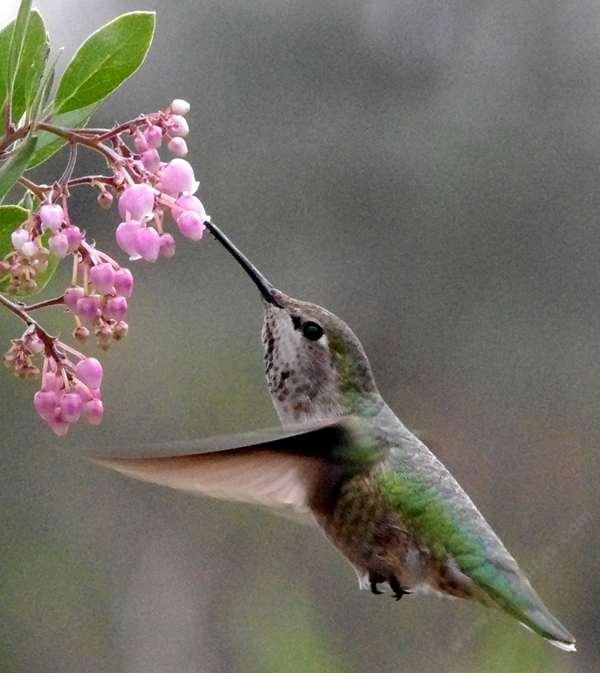

 She locates the nest in cave or deep ravine, often unusually close to others of her species, for more protection from the harsh climate. Nests have been erected in one or two days. More often it takes from one to two weeks to build a nest. Sometimes the one or two tiny pure white eggs are laid about two days apart before the nest is completed. Then nest building takes place simultaneously with incubation.
She locates the nest in cave or deep ravine, often unusually close to others of her species, for more protection from the harsh climate. Nests have been erected in one or two days. More often it takes from one to two weeks to build a nest. Sometimes the one or two tiny pure white eggs are laid about two days apart before the nest is completed. Then nest building takes place simultaneously with incubation.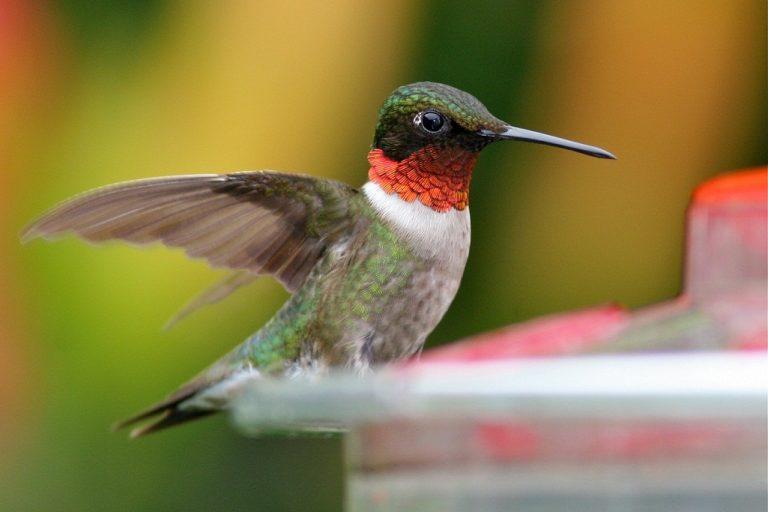 There are a few erroneous reports of an incubation period of only 9 - 12 days. Since the incubating female must leave frequently to forage for her own food, as well as additional nesting materials, incubation takes longer than expected for such tiny eggs. Realistically, it takes about 14 - 17 days and sometimes up to 23 days of incubation before they hatch. If the weather turns nasty, it extends the incubation period.
There are a few erroneous reports of an incubation period of only 9 - 12 days. Since the incubating female must leave frequently to forage for her own food, as well as additional nesting materials, incubation takes longer than expected for such tiny eggs. Realistically, it takes about 14 - 17 days and sometimes up to 23 days of incubation before they hatch. If the weather turns nasty, it extends the incubation period. Females continue to feed their young for as much as 65 days after hatching.
Females continue to feed their young for as much as 65 days after hatching. She sticks her needle-sharp bill so far down the baby's gullet that one might think she would skewer her own young. This does not happen and the babies thrive on a diet heavy in regurgitated insects and probably nectar. They are fed so much that their crops extend from the side of their necks like some kind of gigantic avian goiter!
She sticks her needle-sharp bill so far down the baby's gullet that one might think she would skewer her own young. This does not happen and the babies thrive on a diet heavy in regurgitated insects and probably nectar. They are fed so much that their crops extend from the side of their necks like some kind of gigantic avian goiter!










